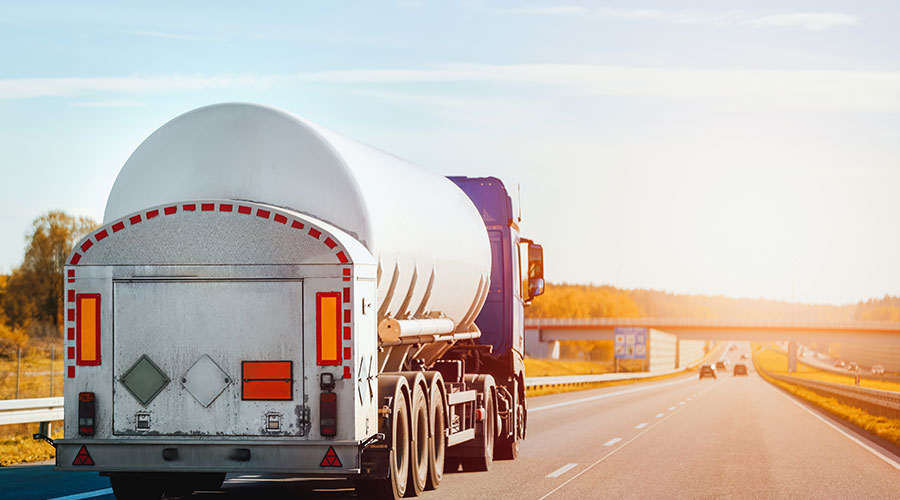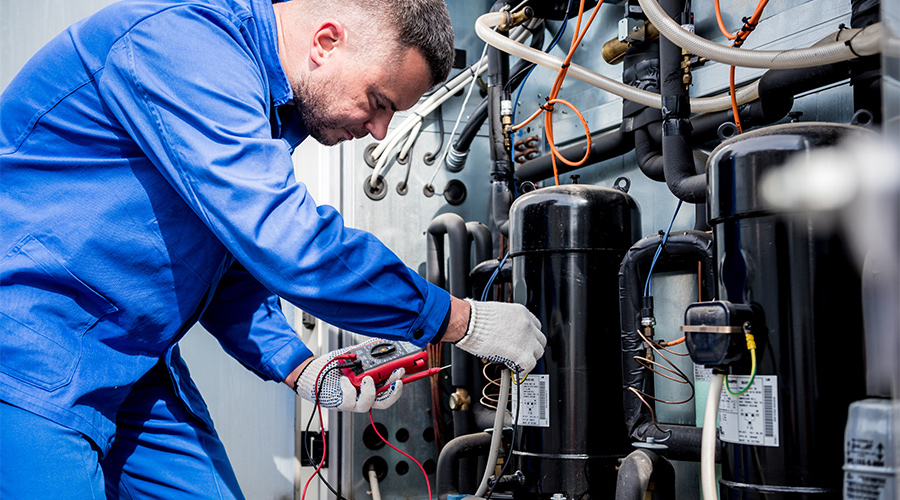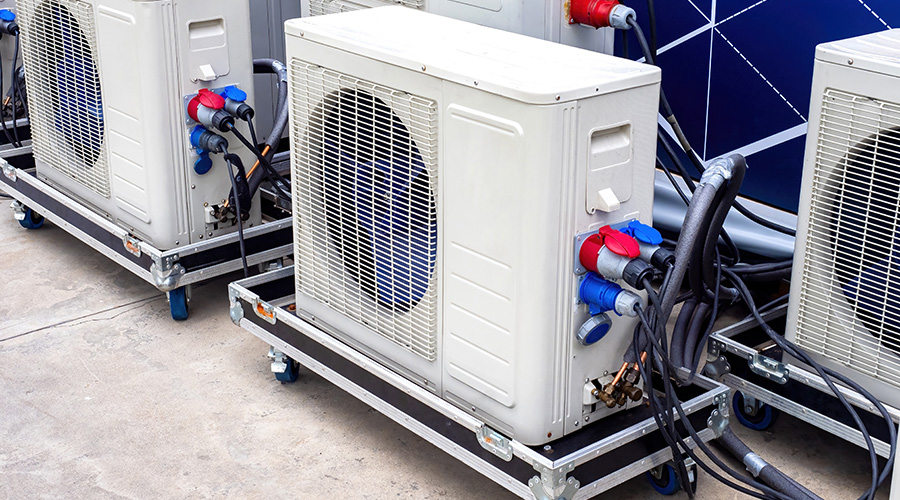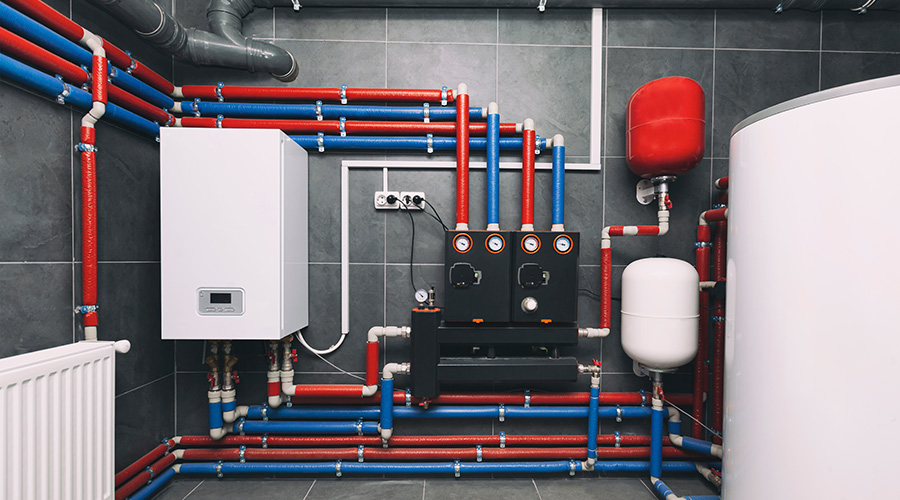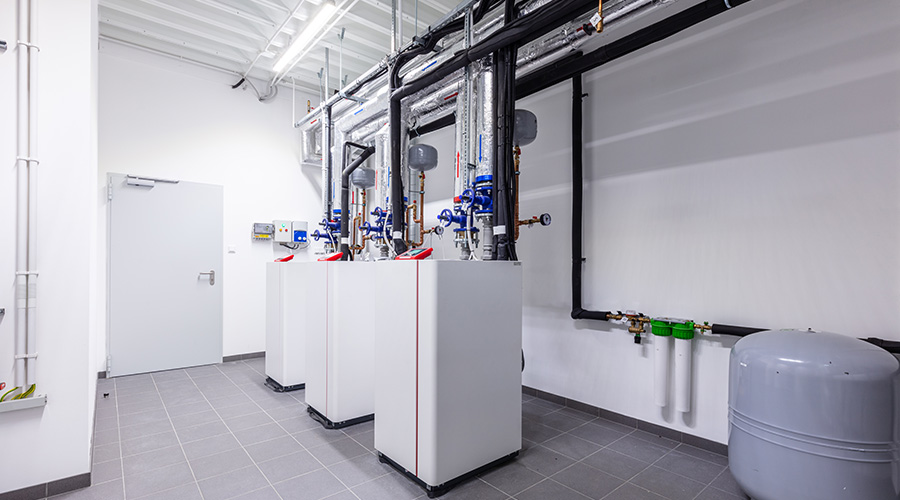Repair or Replace: How to Evaluate Aging Chillers
Chillers are among the costliest products in facilities. Managers need all available data to make the best decisions.
By Joel Williams, Contributing Writer
When chillers in commercial or institutional facilities begin to show signs of failure, maintenance and engineering managers face a critical choice: repair the old units or replace them with modern, energy-efficient models. Building professionals must weigh the immediate costs of repairs against long-term savings, factoring in energy usage, maintenance needs, and environmental impact. Ultimately, the choice strikes a balance between short-term budgeting and future reliability and sustainability.
Assessment ABCs
Experts agree that a thorough assessment is the foundation for making an informed decision about a failing chiller. The first step is to calculate the chiller’s original design efficiency.
“Start by checking the nameplate data on the chiller to gather key information like the original efficiency (kilowatts per ton or kW/ton), tonnage, voltage, refrigerant type, and manufacturing date,” says Brian Gougler, senior director of technical services for ESFM, the facilities management division of Compass Group USA for business and industry.
“Look for any original commissioning documents that can provide baseline performance data, load conditions at startup, and system settings, which help compare how the chiller has aged or drifted from its designed performance.”
Jim Whittaker, service innovation and optimization lead for technical services and sustainable operations at JLL, adds that reviewing preventive or condition-based maintenance records can help identify critical components at risk of failure.
“You can also go beyond standard preventive maintenance intervals by employing predictive-maintenance techniques that assess actual equipment condition in real time, including vibration analyses, oil and refrigerant analyses, infrared thermography, ultrasonic leak detection, and performance trend analyses,” says Whittaker. “Keeping thorough records of all chiller maintenance, repair history, failure codes, and logged faults helps identify recurring problems or components approaching end-of-life.”
Gougler agrees that assessing potential chiller component failures requires a combination of diagnostic strategies.
“Key diagnostics like vibration analysis for mechanical wear, oil sampling for contamination or degradation, and visual inspections for leaks, corrosion, or overheating,” he says, are essential tools. “Another important aspect is the visual inspection of components, like electrical connections, seals, and heat exchanger surfaces, for signs of leaks, corrosion, or overheating, which can also provide early warnings.”
After determining the original efficiency, managers then should determine the current efficiency level in the chiller.
Chiller efficiency, typically expressed in kW/ton, measures the amount of electrical energy (in kilowatts) required by a chiller to produce one ton of cooling. A lower kW/ton value indicates higher efficiency. For example, a chiller rated at 0.6 kW/ton uses much less energy than one rated at 1.0 kW/ton.
To calculate this value, divide the electrical input (in kilowatts) by the cooling output (in tons). For instance, a chiller that uses 300 kW to deliver 500 tons of cooling operates at 0.6 kW per ton.
Facility managers should first consult the building automation system (BAS) or chiller’s local control unit, says Nicholas Augustin, lead consultant and mechanical engineer with WSP in the United States.
“Likely, there is a calculated kW/Ton value or a current operating kW rate that can be determined, as well as tonnage or output kW,” he says. “If you don’t have the output cooling value available in your BAS, you may calculate this figure by obtaining the flow rate on the chilled water side, the entering chilled water temperature and the leaving chilled water temperature as follows: Cooling output (BTUH) = 500 × flow (GPM) × (entering water temperature – leaving water temperature). Divide the result by 12,000 to convert to tons.”
Gougler adds, “Alternatively, you can track your real-time kW usage through the chiller panel or building management system (BMS) and divide that by the current cooling load in tons. Comparing an updated kW/ton value to the original design efficiency (from the nameplate or commissioning data) helps show how much the chiller's performance has degraded over time.”
The final step for managers in the repair vs. replacement argument is to calculate the return on investment (ROI) data on chillers. But before discussing repairs or replacement, gather data to support the financial case, Whittaker advises.
“Start by estimating repair or replacement cost factors such as removal of existing equipment, difficult access surcharges, business interruption, commissioning, and typical parts and labor,” he says. “Next, obtain detailed repair estimates from qualified service providers or OEMs, considering both immediate and foreseeable repairs based on the unit’s history and condition-based monitoring. If repair costs exceed 50 percent of replacement costs, industry standards usually recommend replacing the unit.”
Estimate total costs
The first step in making a decision is getting a complete repair quote from a qualified chiller subcontractor, says Gougler.
“Be sure to calculate total replacement costs, including rigging, crane services, and installation— especially for units on rooftops or in basements,” he says. “If the chiller is over 15-20 years old, replacement often makes more long-term sense. New models offer better efficiency, which can significantly reduce utility and maintenance costs. Also consider refrigerant phaseouts —older chillers may use refrigerants that are now expensive or restricted, whereas new systems run on low-GWP options that reduce environmental impact and compliance risks.”
Whittaker also encourages evaluating lifecycle benefits:
“Estimate the cost and lifespan extension from repairs or replacement, including labor, materials, downtime, energy impacts, and future maintenance,” he says. “Then apply the formula: ROI = (net savings or benefits) ÷ (investment cost) × 100 percent. A higher ROI for replacement signals a stronger financial case.”
Still, ROI alone doesn’t always tell the whole story, Augustin cautions.
"You could have an ROI of 50 percent because you saved $5,000 a year on a $10,000 repair, but a new chiller with 20 percent ROI might save $200,000 net over time,” he says. “That’s why we favor Life Cycle Cost (LCC) analysis to show the total cost difference over a typical 20-year equipment lifespan.”
For greater accuracy, Augustin recommends asking your equipment consultant to run a complete 8760 analysis, which evaluates efficiency using hourly weather data throughout the year to capture part-load conditions more realistically.
Also, don’t rely solely on outdated rules of thumb to size chillers, adds Whittaker.
“Review the building’s actual cooling load using recent BAS data, energy meters, or load studies,” he says. “Comparing current loads to chiller capacity ensures the system isn’t oversized or undersized for present-day conditions.”
“Using a lifecycle costing or an annualized total cost of ownership (TCO) model, a facility manager can calculate the net present value of all annual energy and maintenance savings over the chiller’s expected life and compare this to the initial investment cost,” continues Whittaker. “If the cumulative savings exceed or favorably offset the capital cost within the target payback period, the investment is financially justified.”
Replacing an aging chiller is a significant capital investment, but one that can yield long-term dividends in energy savings, reduced downtime, improved regulatory compliance, and a lower carbon footprint. Armed with accurate efficiency data, detailed cost analysis, and long-term performance projections, facility managers can make the case for smart, future-ready investments.
“HVAC accounts for roughly 35-40 percent of a commercial building’s energy use, and chillers or DX systems make up about 27 percent of that,” says Augustin. “Because most energy plants emit over 0.96 lbs. of carbon per kilowatt hour, switching to more efficient chillers can significantly support ESG and sustainability goals. That impact grows even more if you move to low-GWP refrigerants.”
The type of chiller also can help determine whether repairing or replacing is the best decision for a facility.
“Additionally, if the existing chiller uses steam or gas — such as a steam turbine, steam absorption, gas absorption, or gas-fired engine chiller — replacing it with an electric chiller would better support long-term carbon reduction goals,” says Matthew Yandoli, vice president and mechanical engineer with WSP. “Gas-powered systems rely directly on fossil fuels, and steam chillers often source steam from gas-fired equipment, while electric chillers typically use energy from the grid with no local carbon emissions.”
Joel Williams is a freelance writer based in Frankfort, Illinois.
Related Topics:






